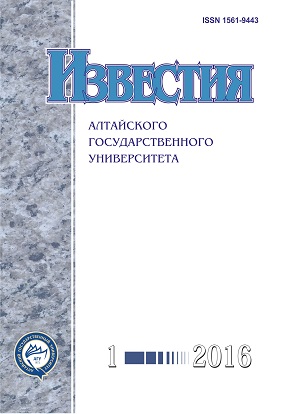A Study of Temperature Dependence of Evaporation Rate of Liquids from a Free Surface and Liquid Boiling Rate on a Solid Heating Surface
Abstract
In this paper, the process of liquid evaporation is considered from the standpoint of the translational motion theory. It is assumed that the oscillation process in molecules of liquid as in crystals consists of fluctuations from equilibrium positions. In the liquid state, positions of the molecules vary with time, and in case of molecular- sized cavity near a molecule there can be an abrupt transition of the liquid molecule from one equilibrium position to another. An assumption has been made that liquid temperature increase during steady-state condition of molecules will result in decrease of steady-state duration time, jump frequency will be increased, and probability of molecule transition from free surface of liquid to the vapor space will also be increased. Hence, it is concluded that temperature increase will cause the increase of liquid evaporation rate. In accordance with the assumptions theoretical dependencies are elaborated for calculation of liquid evaporation rate on its free surface for a wide range of temperatures — from freezing point to boiling point. Also, the nature of temperature dependence of liquid evaporation rate on a solid heating surface during saturated bubble boiling is investigated.
DOI 10.14258/izvasu(2016)1-14
Downloads
Metrics
References
Кутателадзе С.С., Накоряков В.Е. Тепломассобмен и волны в газожидкостных системах. -Новосибирск, 1984.
Qingqing Shen, Wensheng Lin, Anzhong GU, Yonglin JU. A simplified model of direct-contact heat transfer in desalination system utilizing LNG cold energy. Front. Energy. -2012. -№ 6 (2).
Amir Faghri, Yuwen Zhang, John Howell. Advanced Heat and Mass Transfer. -2010.
Лабунцов Д.А. Физические основы энергетики: избранные статьи по теплообмену, гидродинамике и термодинамике. -М., 2000.
Анохина Е.В. Исследование процессов испарения и кипения жидкостей//ЖТФ. -2010. -Т. 80. -Вып. 8.
Френкель Я.И. Кинетическая теория жидкостей. -Л., 1975.
Кесслер Ю.М., Петренко В.Е., Лященко А.К. Вода: структура, состояние, сольватация. -М., 2003.
Марков И.И., Хащенко А.А., Вечер О.В. О скорости испарения жидкости с ее свободной поверхности и с поверхности нагрева//Сб. научн. тр. -Северо-Кавказское отделение технологических наук РФ. -2002. -Вып. 6.
Хащенко А.А., Меньщиков А.В., Афанасьев М.А., Пуля А.В., Коробов А.Ю. Экспериментальное исследование процессов испарения и кипения жидкостей//Новые технологии в сельском хозяйстве и пищевой промышленности с использованием электрофизических факторов и озона: материалы VII Росс. науч.-практ. конф. -Ставрополь, 2012.
Izvestiya of Altai State University is a golden publisher, as we allow self-archiving, but most importantly we are fully transparent about your rights.
Authors may present and discuss their findings ahead of publication: at biological or scientific conferences, on preprint servers, in public databases, and in blogs, wikis, tweets, and other informal communication channels.
Izvestiya of Altai State University allows authors to deposit manuscripts (currently under review or those for intended submission to Izvestiya of Altai State University) in non-commercial, pre-print servers such as ArXiv.
Authors who publish with this journal agree to the following terms:
- Authors retain copyright and grant the journal right of first publication with the work simultaneously licensed under a Creative Commons Attribution License (CC BY 4.0) that allows others to share the work with an acknowledgement of the work's authorship and initial publication in this journal.
- Authors are able to enter into separate, additional contractual arrangements for the non-exclusive distribution of the journal's published version of the work (e.g., post it to an institutional repository or publish it in a book), with an acknowledgement of its initial publication in this journal.
- Authors are permitted and encouraged to post their work online (e.g., in institutional repositories or on their website) prior to and during the submission process, as it can lead to productive exchanges, as well as earlier and greater citation of published work (See The Effect of Open Access).








